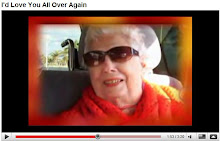A Hidden Crime
By Marie-Therese Connolly at the Washington Post
As though declining health, impending mortality and other challenges weren't hard enough, too often old age is also plagued by abuse, neglect and exploitation.
Science has extended our lives dramatically: In 1900, Americans' average life expectancy was 47. By 2000, it was 77, and it's still rising. But our energy and resources have been disproportionately focused on living longer rather than living better -- a phenomenon called " the longevity paradox."
Consider the travails of the late socialite and philanthropist Brooke Astor. Even her fortune couldn't protect her. Modern medicine helped her live to 105, but her friends and grandson assert that she languished with Alzheimer's on a reeking couch, subsisting on pureed peas and oatmeal because her son didn't pay for adequate care; the Manhattan district attorney has indicted him on charges of grand larceny for pilfering her assets.
Eight years of working on issues involving abuse of the elderly at the Department of Justice taught me that while Astor's life may have been uncommon, her alleged plight in old age was not. Estimates of the prevalence of elder abuse vary wildly, but by some reports there could be up to 5 million cases a year, with 84 percent going unreported. All other factors being equal, victims of even relatively minor mistreatment are three times more likely to die prematurely than those who are not victimized.
We are perhaps in greatest denial about elder sexual abuse. When the perpetrator is a son or grandson, these cases are met with disbelief.
Some facilities provide great care. But the news about staffing, the most critical factor in the quality of long-term care, is bleak:
Yet not a single federal employee works on elder abuse issues full-time. Ironically, the family violence field has largely ignored elder abuse, and most entities devoted to aging issues assign it low priority. This inattention is all the more baffling given the approaching tsunami of 77 million aging baby boomers, and given that the fastest-growing segment of the population, those 85 and older, are at greatest risk for mistreatment.
Which brings us to this question: How do we as individuals and as a nation measure the value of life in old age? And why have we not done more to protect and defend our most vulnerable elders?
We take solace in believing that we are not a nation that abandons our elders. But we have overestimated our civility. Because in the end, we subject many of our old people to a plight as bad as, if not worse than, the ice floe.
connollymt@gmail.com
Marie-Therese Connolly, a fellow at the Woodrow Wilson International Center for Scholars, is former coordinator of the Department of Justice's Elder Justice and Nursing Home Initiative.
















No comments:
Post a Comment